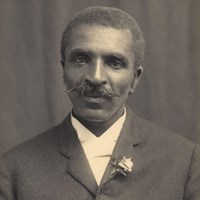- Valles Caldera National Preserve
Jessie Fenton Fitzgerald
- Locations: Valles Caldera National Preserve

In the mid-1900s, at northern New Mexico’s Baca Ranch (which is now part of Valles Caldera National Preserve), owner Franklin Bond sought a ranch foreman to oversee and manage daily operations. According to his daughter, Mary Ann, Mr. Bond hired Richard Fitzgerald as a workaround for what would have been a deviation from gender norms at the time—hiring a woman. The person Mr. Bond really wanted for the job? Richard’s wife, Jessie Fenton Fitzgerald.
- César E. Chávez National Monument
Larry Itliong
- Locations: César E. Chávez National Monument

Larry Itliong was a Filipino American labor organizer and civil rights activist. He played a central role in the founding of the United Farm Workers (UFW) union. Itliong is best known for his role in the 1965-1966 strike and boycott against California grape growers and the subsequent founding of the UFW. His activism was a lifelong endeavor. For more than four decades, he organized and advocated on behalf of farm and cannery workers, immigrants, and Asian Americans.
- César E. Chávez National Monument
Philip Vera Cruz
- Locations: César E. Chávez National Monument

Philip Vera Cruz was a Filipino American labor organizer, farmworker, and leader in the Asian American movement. He played a central role in founding the United Farm Workers (UFW) union. Vera Cruz is best known for his role in the Delano Farmworkers strike and boycott, and his leadership in UFW, where he served as the second vice-president.
- Homestead National Historical Park
Benjamin Franklin Fields, Sr.
- Locations: George Washington Carver National Monument, Homestead National Historical Park, Tuskegee Institute National Historic Site

Over the course of his lifetime, Carver rose from slavery to become a renowned educator and research scientist. For over 40 years, he worked endlessly to find practical alternatives to improve the agricultural practices and thus the economic status of African Americans. He is regarded as one of the most prominent black scientists of the early 20th century.
- Guadalupe Mountains National Park
Walter Glover
- Homestead National Historical Park
James Nathaniel Edwards
- Locations: Homestead National Historical Park
James “Jim” Edwards has been dubbed the greatest black cattle rancher in all the West. Unable to secure work at the coal mine, he walked more than 80 miles south to Lusk and found work as a ranch hand. In 1914 he started his own ranch. Edwards was so successful that he was able to thrive during the Great Depression, surviving a $30,000 loss. James Edwards was the first person in the area to have hot running water, radio, and a telephone.
- Guadalupe Mountains National Park
J.C. Hunter Jr.
- Locations: Guadalupe Mountains National Park

When J.C. Hunter died in 1945, his son, J.C. Hunter Jr. inherited the Ranch. “Jr.” followed in his father’s footsteps. He continued acquiring sections of land until the family ranch encompassed approximately 72,000 acres of Guadalupe Mountains in Texas. like his father, Jr. had an abiding interest in conservation and harbored similar dreams of seeing the Mountains protected in perpetuity.
- Guadalupe Mountains National Park
Judge J. C. Hunter
- Locations: Guadalupe Mountains National Park

Jessie Coleman “J.C.” Hunter—an energetic, trustworthy, and shrewd businessman—wore many hats in the early 20th century. He first moved to Van Horn in 1911 as the Superintendent of Schools, and then became county treasurer, county judge, and the director and vice president of the Van Horn State Bank. J.C. Hunter supported a park in the Guadalupe Mountains as early as the mid-1920s.
- Guadalupe Mountains National Park
Noel Kincaid
Last updated: July 28, 2023



